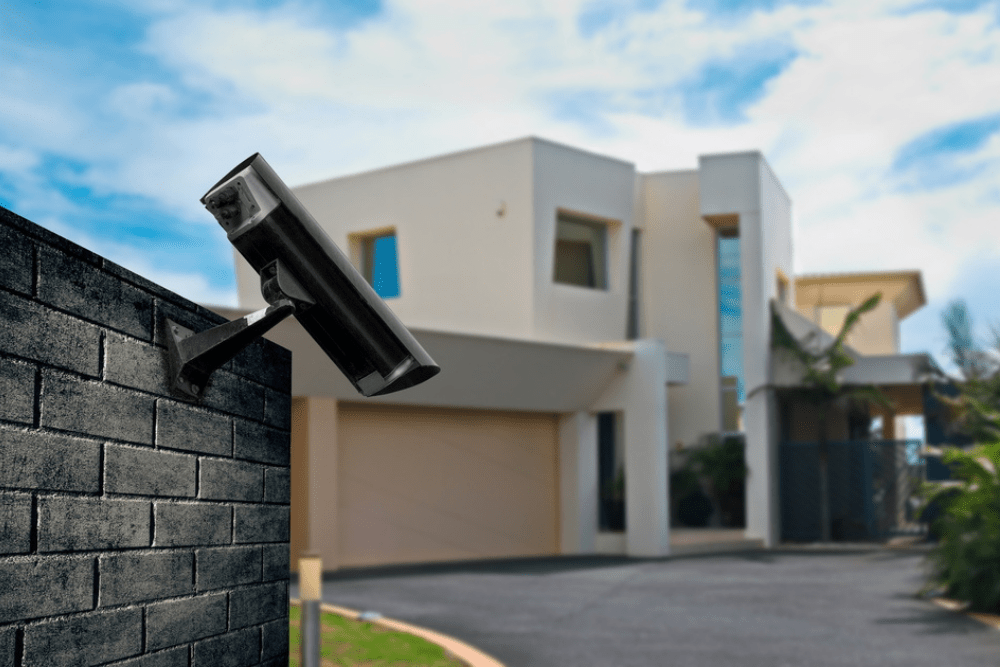

We may earn revenue from the products available on this page and participate in affiliate programs. Learn More ›
Q: I’ve recently decided to invest in a home security system. The system I chose allows me to install and set up the sensors and cameras wherever I choose, then connect them to the system for monitoring. But there are so many different possible locations: How do I know where to place security cameras so my home and property are well covered?
A: A system that allows you to design your own configuration is a great option because it allows you to configure and reconfigure your home security plan as your circumstances or concerns change. It does, however, leave the decision of where to place the cameras up to you instead of in the hands of a security professional. Luckily, there are some tried-and-true guidelines about security camera placement that can enhance your home’s level of security.
Before you start installing, you’ll want to take some time to really evaluate your property, home, and security concerns. An easy way to do this is to draw a sketch or outline of your home and property with the entry points marked, along with any special concerns. Then you can begin to mark out places you’d like to place cameras and sensors and create a home security camera placement diagram. As you decide where to put security cameras and sensors, mark them on the diagram. This will let you play with the number of cameras and sensors you have to design the most balanced, effective coverage before you start drilling into your walls.
Where do you need cameras? Entry points are the first line of defense, so you’ll want cameras that capture activity at main entryways and first-floor or basement windows. In addition, cameras should cover areas with likely targets for thieves, such as driveways, porches, garages, and sheds. And finally, consider placing cameras that keep an eye on your front and back yards: These cameras can give you a heads-up that someone is a little too close before they even approach an entry point, like an early warning system. Inside the home, entryways and high-traffic areas are locations to consider for residential security camera installation.
There are considerations beyond the area you need covered when you’re planning home security camera placement. Deciding how, where, and at what angle to place the cameras is important to protect them and prevent a criminal from tampering with them. These details can also be mapped out on an indoor and outdoor home security camera placement diagram so that your installation will run smoothly when you’re ready to begin.
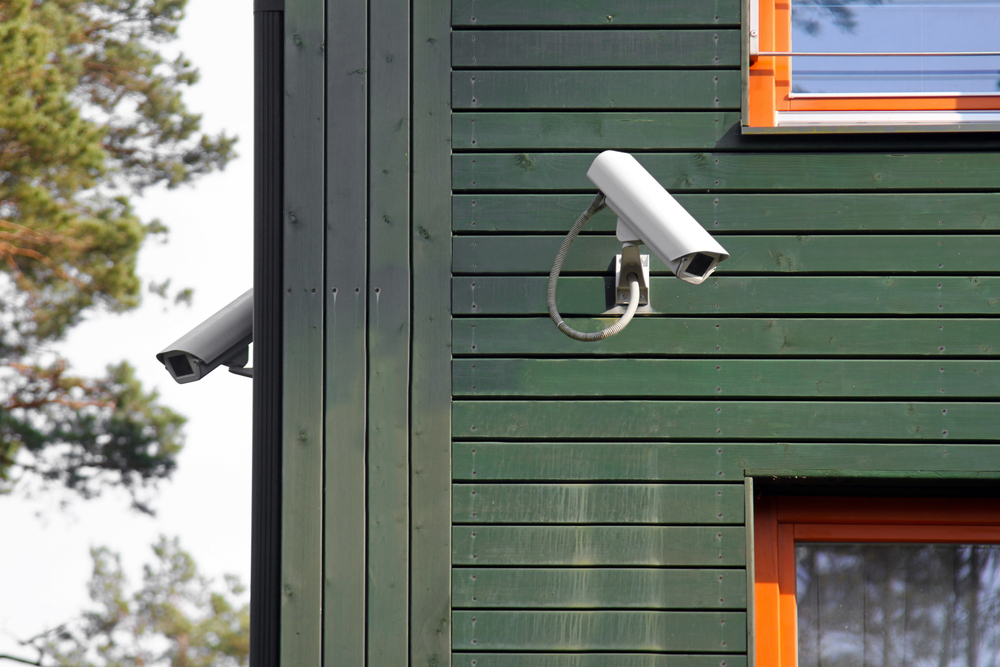
Security cameras should be placed at the most obvious points of entry: ground-floor doors and windows, especially the main entryway and any side or back doors.
To avoid drawing attention to themselves, many burglars will aim for the entry points to your home that look natural. The front and back doors are the most obvious, because if a burglar confidently approaches one of these doors, they won’t automatically arouse the suspicion of passersby. While someone attempting to get into a ground-floor window would certainly make most people look twice, windows on the side of the home are often at least partially obscured and will be where a burglar heads next if the doors aren’t easily accessible. Placing cameras outdoors to include all ground-floor windows and doors is the best starting point and will cover the most critical areas. It’s also worth considering placing cameras inside to include the entryways in their area of coverage; indoor cameras will record from a different angle and may be more likely to capture identifying images of a burglar’s face and clothes to provide more specific information to the police. Some motion sensors can’t work through glass, however, so if you’re mounting cameras indoors you’ll need to check to see that they work through your windows. If your cameras won’t, you can consider a doorbell camera to get the angle you’d prefer.
As you place and angle these cameras, think about what you want to be able to see. Are you looking to provide a long, sweeping view down the side of the house so that you’ll be notified of movement or activity there, rather than worrying about detailed, clear close-ups? In that case, are you counting on potential criminals seeing the camera and viewing it as a deterrent? Or would you prefer indoor cameras that peer out the window to capture the criminals’ faces as they attempt to break in? Place yourself as close to the camera’s intended position as you can, and sweep your view around: Will you see what you need to see on a camera placed there, or does it need to be higher up? Angled differently? Somewhere else altogether?
Protect your home and family with a top-notch security system. Vivint’s professionally installed systems don’t just alert you to threats—they help both prevent and deter them. See Vivint’s cameras and services.
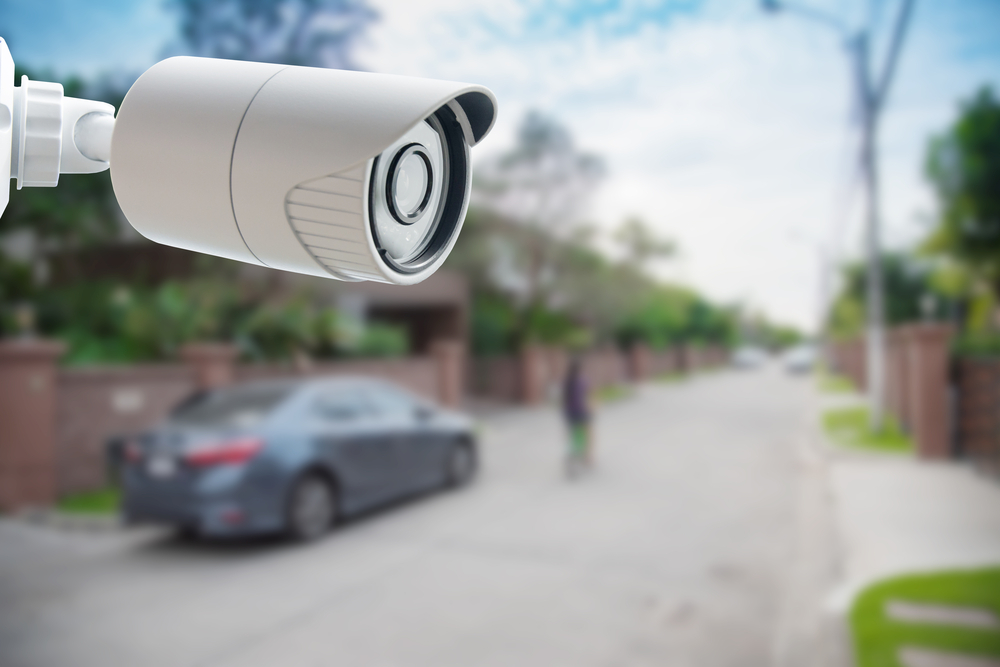
Garages and driveways are considered entryways, so consider installing security cameras that cover those areas.
Your cars and garage present attractive targets to criminals. Cars are often left unlocked, sometimes helpfully with the keys still inside, and garages are full of tools and sporting gear. In addition, burgling a car or garage often feels less risky for a criminal, because there’s a lower likelihood of encountering one of the home’s residents or a noisy dog. If the garage is attached to the home, it’s also a direct entry point, especially because many residents do not lock the door between the garage and the house (or use an ineffective, easily defeated lock). After the entry doors, the driveway and garage are the most important places to position a security camera; with appropriate outdoor security camera placement, tool and equipment collections can be protected, along with cars and the home itself.
Consider installing security cameras that monitor activity in your yard—both the front yard and backyard.
One of the benefits of security cameras is that they buy you time to consider or address a problem. To extend that time, it’s a good idea to include some cameras that cover your front yard and backyard in your outdoor security camera placement diagram. These cameras can give you an early warning if someone is approaching your window or front door and are especially helpful when monitoring the backyard, where there are fewer observers and passersby. Monitoring the backyard, especially if the cameras are accompanied by motion sensor lighting or have night-vision capabilities, is a great way to make the space unappealing for a burglar trying to be covert and potentially spurring them to leave and find another target. An additional benefit of cameras that include the yard is that you can monitor children who are playing outside or keep an eye on your pet without running outside every few minutes.
One thing to consider when thinking about how to install outdoor cameras: You’ll want to adjust the sensitivity of the motion sensors that switch the camera on and alert you to motion. It’s fine to have cameras that are very focused on an area close to the house set to a high sensitivity, because it’s less likely that something innocuous will trigger the sensor. Out farther in the yard, however, any passing wildlife can trigger a camera that is on a hair trigger. Unless you’d like to be awakened all night long to check out every fox or rabbit that slips through the yard, test the sensitivity of the motion sensors and adjust it until a person walking past triggers the sensor but a small dog or wayward beach ball does not.
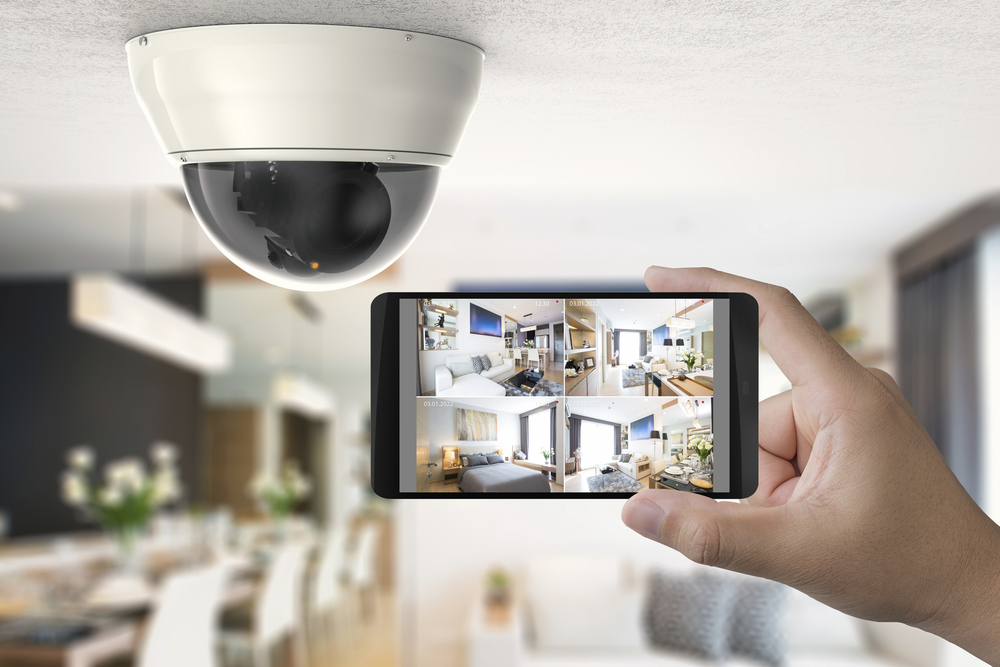
Don’t neglect the benefit of installing security cameras in high-traffic areas inside your home such as hallways, basements, and even the living room and kitchen.
Some people squirm a bit at the idea of interior cameras. News stories about hidden cameras in public spaces or rental dwellings have made many people uncomfortable with the idea of being recorded inside their homes. However, thoughtfully placed cameras inside the home can essentially give you a system of house CCTV (closed circuit television): In the event that you hear a strange noise late at night, you’ll be able to access the feed and check to see if that noise was a pane of glass breaking or the cat knocking your keys off the counter. Entryways and living spaces on the first level are good locations for interior cameras, as are hallways that lead to other areas of the house. Placing a camera in a stairway can be helpful if there are elderly residents in the home who may be unsteady on their feet, as the cameras would offer a way to check to see if someone needed help.
Need a home security system? SimpliSafe can help. With a comprehensive whole-house solution, you can be prepared for the unexpected. View SimpliSafe systems and prices.
The basement may seem like an odd place to put a camera, but consider this: Does your basement have a door or egress windows? Most current code requires exit points other than the main stairway door. If there’s an opening where you can get out, there’s an opening where a criminal can get in, and many homes keep valuable tools, electronics, and exercise equipment in the basement, making them exciting targets for a burglar looking for a quick score. A security camera in the basement will alert you to an unwanted presence and give you time to call for assistance or get out of the house.
Beyond basic security, indoor cameras allow you to monitor pets while you’re away or to make sure that children have arrived home safely from school (and aren’t raiding the cookie stash before you get home). Some cameras will even allow you to interact with pets or children!
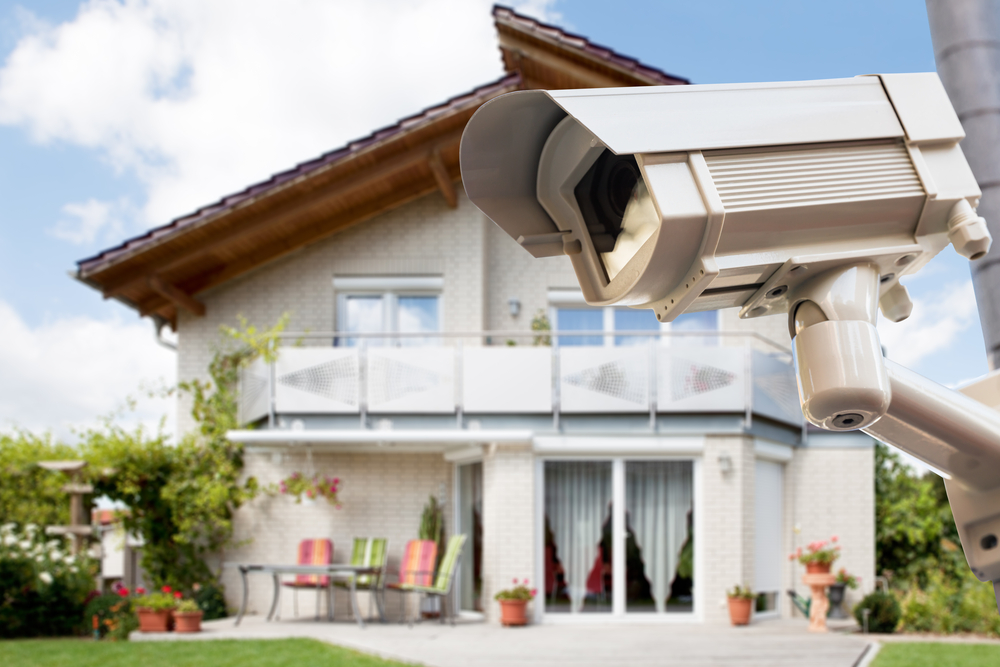
However, never place security cameras in bedrooms, bathrooms, or on someone else’s property.
The sense of unease you may have felt when you considered adding cameras to the interior of your home wasn’t unreasonable: Home is supposed to be a safe place where the outside can’t get in. Even if you have valuables in your bedroom, you probably don’t really want to have cameras in there for privacy reasons, and the same goes for the bathroom.
You’d feel equally uneasy if you felt you were being surveilled by cameras on your neighbors’ properties that were monitoring your yard as well as theirs, and they would certainly feel the same way. In some states it’s illegal to include neighboring yards in the scope of your cameras’ surveillance, so check to make sure that your cameras are only monitoring your own property or public areas such as the street in front of your house. In some cases, such as a narrow side yard that presents a security problem for both your home and a neighbor’s, a quick conversation with your neighbor can help you decide together if monitoring that space with a camera will be beneficial and permissible to both parties, but otherwise, keep your cameras’ eyes on your own yard.
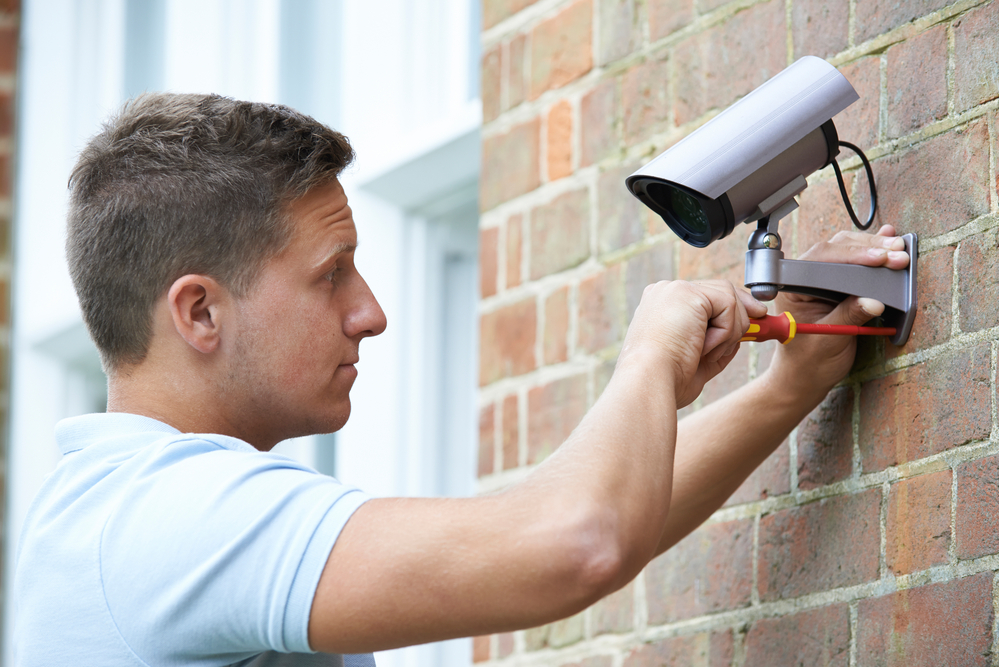
When placing a security camera, consider details such as visibility, height off the ground, and more.
Once you’ve identified both the best home security system for you and the best locations for your cameras, you’ll have to consider the mounting methods and positions.
There is some debate about whether it’s preferable for your cameras to be visible or hidden from potential thieves; a visible camera may be a deterrent that makes your home a less-attractive target for a thief who is afraid of getting caught, but on the other hand, the presence of a lot of security cameras around a home and property suggests that there is a lot that you’re interested in protecting and could convey to a thief that there’s treasure inside. Whether or not to mount your cameras visibly or in a concealed area will be your decision, but a combination of the two might create a good balance.
Frontpoint protects your home in an emergency, whether it’s a break-in, fire, medical emergency, and more. View Frontpoint products.
Especially if the cameras are visible, you’ll want to mount them high enough from the ground that a burglar can’t easily redirect, cover, or destroy your camera. There are limits to what you can do here—a criminal with great aim and a baseball or long stick can reach higher than you might think—but in general you’ll want the cameras high enough off the ground that a thief can’t knock it sideways just by standing on the hood of your car. This doesn’t just apply to the cameras themselves, either: If your cameras are hardwired into the electrical system or the internet connection, you’ll need to hide and secure the wires as well.
In addition, you’ll want to make sure the cameras are mounted securely as the manufacturer recommends so that they can’t become misdirected by wind or rain, and you’ll want to check that they’re positioned in such a way that the sun’s glare or street lights won’t render them useless. Check the feed from the cameras at several different times of day over the first few days that you have them and periodically through the year—as seasons change, so will the visibility based on the angle of the sun in the morning and late afternoon, and don’t forget about tree branches as they leaf out. Keep the lenses clean and unobstructed; during growing seasons, a good coating of pollen can render a camera completely useless.
While there are certainly places where security cameras are more effective, having them to begin with is a right step in increasing the protection and security of your home and family.
